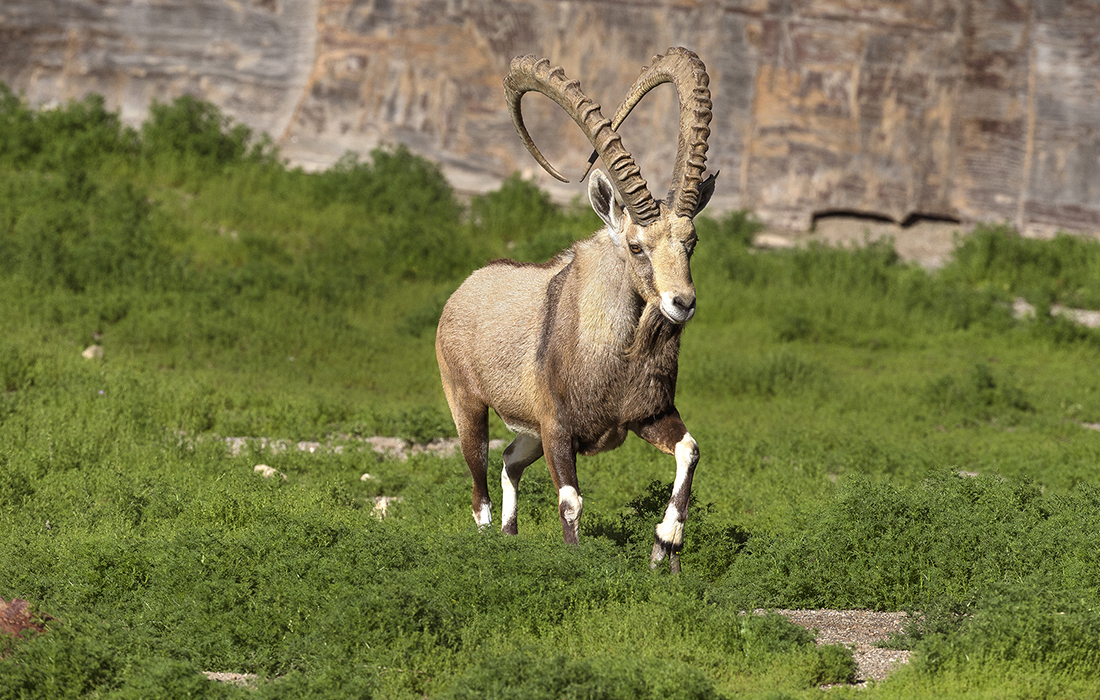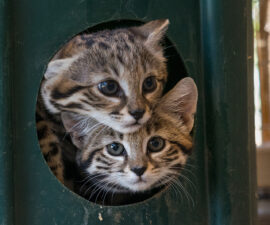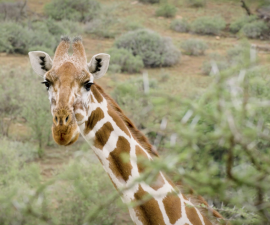BY Eston Ellis
Photography by Ken Bohn
With large curved horns measuring up to four feet long, and segmented, concave hooves to climb even the steepest rocky cliffs, the Nubian ibex Capra nubiana is both amazingly sure-footed and eye-catching. This wild goat species, native to northeastern Africa and the Middle East, will soon be seen at the Zoo’s Conrad Prebys Africa Rocks, in the Ethiopian Highlands multispecies habitat. The Safari Park is also home to a herd of Nubian ibex, and continues to conduct a successful breeding program for this threatened species: nearly 550 have been born at the Park to date.
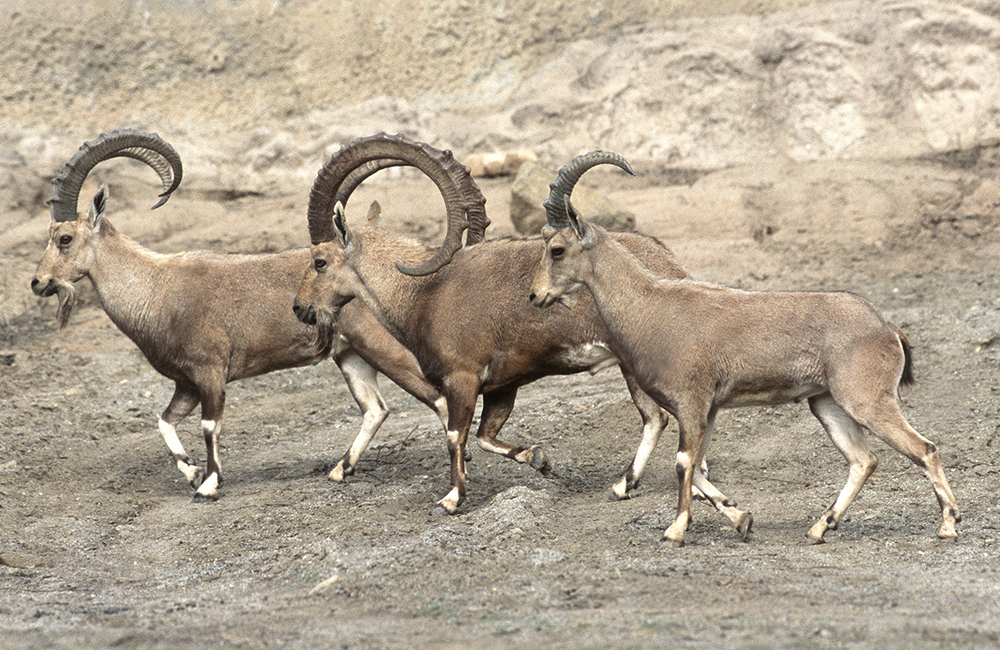
IMPRESSIVE HEADGEAR
The horns of a male Nubian ibex can be up to 48 inches long—equal to his body length.
 Nubian ibex measure about 2 to 2.5 feet high at the shoulder and about 3.5 to 4 feet in length, and males are larger than females.
Nubian ibex measure about 2 to 2.5 feet high at the shoulder and about 3.5 to 4 feet in length, and males are larger than females.
“They’re smart animals; they are thinkers that will challenge their new exhibit,” said Carmi Penny, director of Collections Husbandry Science and curator of mammals at the San Diego Zoo. “They’re also a regal animal, visually—especially if a person has an opportunity to see them against the skyline.”
Adult males have a distinctive beard—which they use in scent marking and to attract females during mating season—along with those one-of-a-kind horns. “The horns grow quickly when they are youngsters, but it takes a while for that spectacular backward sweep to develop,” Carmi said.
At Africa Rocks, guests will be able to see Nubian ibex exhibiting natural behaviors, including climbing rocky outcroppings. “Their hooves are designed to be able to use the cracks and crevices, and they can reach places you’d think would be impossible,” Carmi explained. “They developed this adaptation over time.”
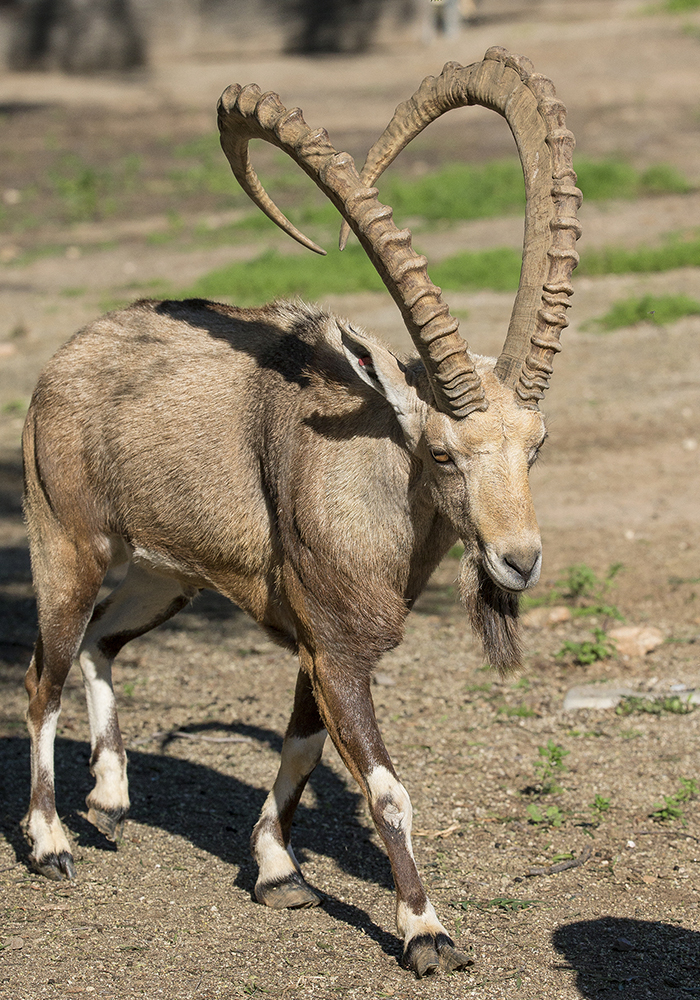
MALES OF DISTINCTION
Adult male Nubian ibex use their large, backward-curved horns to spar during mating season, when competing for females; and they use their long beards for scent marking.
Guests can also observe males sparring with each other, engaging in playful head-butting with their impressive horns. “Right now, they are all males, so they will not be competing for females: it’s just ‘boys club’ playing,” Carmi said. Females will be introduced in about a year.
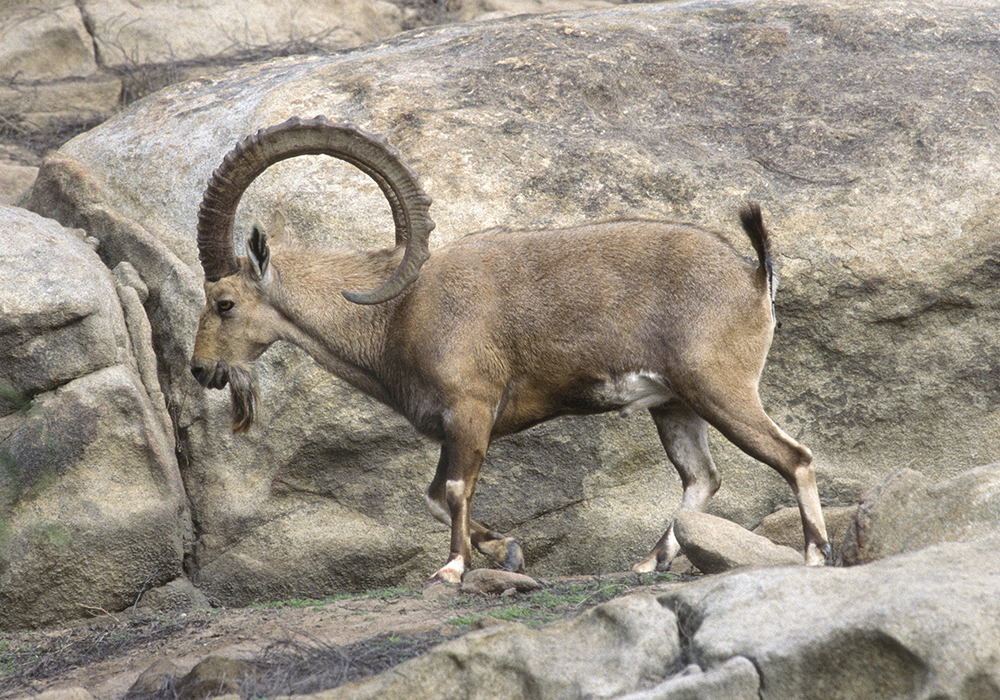
SURE-FOOTED CLIMBERS
With their segmented, concave hooves, Nubian ibex can make their way up and down steep, rocky cliffs with surprising skill.
 Both males and females have horns. A male’s horns can be up to 48 inches in length, while the females’ horns reach 14 inches
Both males and females have horns. A male’s horns can be up to 48 inches in length, while the females’ horns reach 14 inches
in length.
The Zoo’s Nubian ibex share their habitat with geladas. These large-bodied, long-haired, grass-eating primates live in dynamic, complex societies. While this group of geladas has shared an exhibit with ibex previously, living with geladas is a new experience for Africa Rocks’ Nubian ibex. “It will be interesting to watch how—or if—they interact,” Carmi said.
The range of the Nubian ibex in Africa and the Middle East is declining, and fewer than 10,000 are left in their wild habitats. Threats they face include habitat loss, competition from livestock for food and water, and illegal hunting—sometimes involving large groups of people with automatic weapons. Nubian ibex are currently categorized as Vulnerable on the International Union for Conservation of Nature (IUCN) Red List of Threatened Species, “but I would anticipate when IUCN reassesses them, they will have Endangered status,” Carmi said.
“This is an important species for us to be involved with,” he added. “Like giraffes, they are disappearing from their habitats. We hope that they get more attention.”

